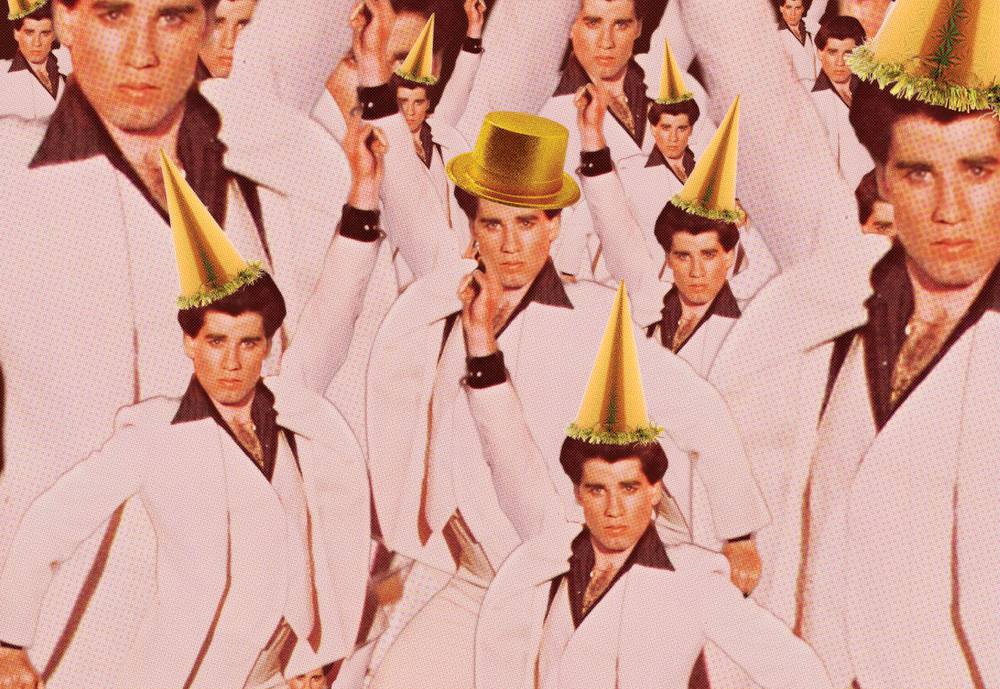This year marks the 40th anniversary of Saturday Night Fever. To celebrate, Paramount is reissuing the film on blu-ray, complete with a crisp 4K restoration and a new director’s cut. Once again, it’s packaged in the usual iconography—the checkerboard dancefloor, a silhouette of that famous white suit with its finger pointed heavenward—which is to be expected, I guess. But disco is only a fraction of what I love about Saturday Night Fever, my favorite movie of all time.
I’ve been to several public screenings of SNF over the years. There’s always that noticeable contingent that arrives in nutty disco shirts and feather boas and rainbow afro wigs, expecting some Grease-style sing-along. And a half hour into the movie, the wigs and boas are tossed aside as everyone remembers this is not a pleasant story. Its characters are bitter, abusive, homophobic, misogynistic. Its backdrop is ’70s-era Brooklyn, a place of limited prospects and scant hope. It’s easy to forget that underneath all those glimmering strings and bouncy basslines, the Bee Gees are pleading again and again, “I’m goin’ nowhere, somebody help me.”
One of the great New York dramas of the period—up there with the likes of Mean Streets and Dog Day Afternoon—Saturday Night Fever will forever be ill-served by the phenomenon it unleashed. In the words of Anthony Bourdain, who paid his dues in ’70s NYC, it was “a decent film about a hopeless, pig-ignorant loser who fills his empty night by dancing (badly) at a local disco,” and it was “criminally misread by millions of people who made its well-portrayed but pathetic protagonist into a hero.” If the world is fond of looking back at the ’70s as a time of inspired abandon, Bourdain remembers how it really was: “Every douchebag in America who bought a white suit and some heavily adulterated cocaine was suddenly empowered to show you his back fat and chest hair.”
So, yeah, Tony Manero is a racist homophobe who treats women horribly, but thanks entirely to John Travolta’s Oscar-nominated performance, he seems less like an asshole and more like a prisoner of his environment. In one telling scene, his friends harass a gay couple while walking through town, yet Tony keeps his head low and doesn’t participate. Film theorists use this as proof that Tony is a closet case, and he is indeed trapped—by life. At one point, he tells his older brother, a priest who has just turned in his collar, “I always felt like I was the sh*t of the family, and you was, like, perfect.” His brother’s response makes Tony glow: “Now that I’m the disgrace to the family, maybe you’re not sh*t anymore.”
The one who helps Tony believe this is Stephanie Mangano, a fellow Brooklynite who works in a fancy, celebrity-filled office in Manhattan. Stephanie is my favorite move character ever. She’s a stuck-up namedropper who can’t shake her Bay Ridge accent and only knows Laurence Olivier as “the guy who does all those Polaroid commercials.” She also loves tea with lemon. “All the women executives in my office, they all drink tea with lemon,” she insists. “And you notice that I do, too.” It’s all an act, of course. She’s just as scared as Tony, and through mutual support, they both move on.
It’s the scenes between Tony and Stephanie that make Saturday Night Fever so great. The music and the dancing are first-rate fabulous, of course (Bourdain is out of his mind if he thinks Travolta dances “badly”), but who hasn’t felt caged in their neighborhood? Who hasn’t daydreamed of crossing that bridge and becoming someone else, something better? Peel away all that polyester, and Saturday Night Fever feels as timeless as Gatsby.







